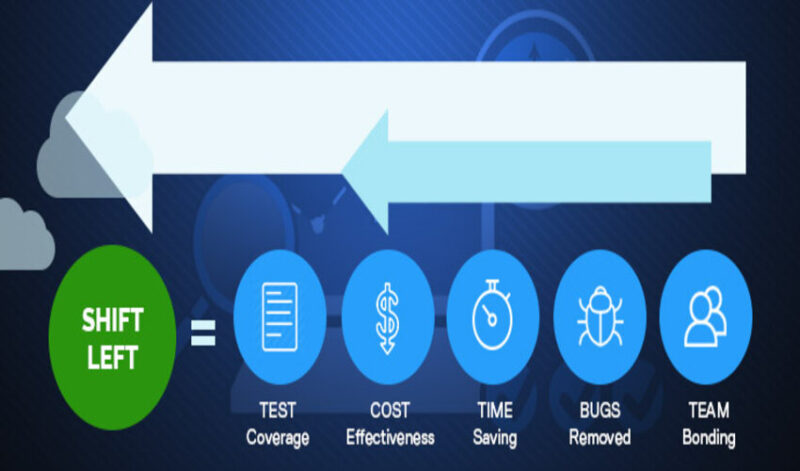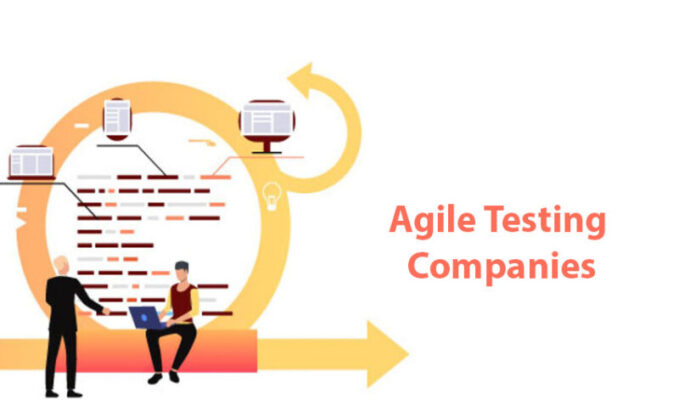The shift-left methodology has gained significant attention in the software development industry. Traditionally, testing activities were performed towards the later stages of the development lifecycle. However, the shift-left testing methodology promotes incorporating testing and quality assurance activities early on in the software development process. By shifting testing activities to the left, organizations can identify and address issues and defects earlier, resulting in improved software quality and faster time to market.
Exploring the Shift-Left Methodology
The shift-left testing technique is a software development approach emphasizing the early integration of testing and quality assurance activities into the development process. Organizations aim to detect and address issues at earlier stages by shifting testing activities to the left, ultimately improving software quality. In this section, we will define the shift-left methodology, discuss its fundamental principles, explain the benefits of early testing, and explore how it has revolutionized the software development lifecycle.
The shift-left methodology involves moving testing activities to earlier stages of the software development process, enabling early detection and resolution of defects. Its key principles include:
- Early Engagement: Testing and quality assurance teams actively collaborate with developers and stakeholders from the initial requirements gathering and design stages.
- Test-Driven Development (TDD): Tests are created before writing the code, ensuring the development process is driven by predefined test cases and requirements.
- Continuous Integration and Continuous Testing: Frequent code integration and automated testing are performed to identify issues promptly and provide rapid feedback.
- Collaboration and Communication: Close collaboration between developers, testers, and other stakeholders fosters a shared understanding of requirements and quality goals.
The 4th graph in the above slide demonstrates the advantage of using a shift-left approach for more error detection in the earlier stages of the development process. The blue line represents the percentage of error defection in different stages while developing an application or software. The orange line is to demonstrate error detection using the Shift Left Methodology.
However, unlike if you notice in the 2nd graph, without using the left-shift methodology, the error detection significantly increases in the system testing, which overall increases the cost and delays the deployment.
The cost of fixing the bugs and errors is represented by the red line in the 4th graph. If we adopt the Shift Left Methodology and move the testing to the early stages, the cost of fixing bugs is significantly less than fixing the bugs in the testing stage, which is 640x.
Benefits of early testing and its Impact on software quality
- Early Defect Detection: By implying shift-left technique in the development process, defects and issues can be identified and addressed at their root cause, reducing the likelihood of severe problems in later stages.
- Cost and Time Savings: Early defect detection and resolution prevent costly rework and shorten the overall development cycle, saving time and resources.
- Improved Software Quality: Shift-left methodology allows for identifying usability, performance, security, and other non-functional issues, leading to higher software quality and enhanced end-user satisfaction.
- Risk Mitigation: Early testing helps identify and mitigate risks associated with system integration, performance bottlenecks, security vulnerabilities, and compatibility issues.
Revolutionizing the software development lifecycle
The shift-left approach has revolutionized the software development lifecycle in several ways:
- Proactive Issue Prevention
By incorporating early testing, the shift-left methodology focuses on preventing issues rather than finding and fixing them later, leading to higher-quality software.
- Agile and Iterative Development
The shift-left approach aligns well with agile and iterative development methodologies. The shift-left approach in agile enables faster iterations, continuous improvement, and efficient feedback loops.
- Increased Collaboration
Collaboration between different roles and teams, such as developers, testers, and stakeholders, is essential in the shift-left approach, promoting a shared responsibility for quality and faster issue resolution.
- Continuous Delivery
Integrating testing into the development process facilitates continuous delivery, allowing organizations to release software more frequently, reliably, and confidently.
Addressing common challenges
- Limited Awareness and Buy-in
Ensure all stakeholders, including developers, testers, and management, know the benefits and value of shift-left non-functional testing to gain their buy-in and support.
- Changing Mindset and Processes
Overcoming resistance to change and fostering a culture that embraces early testing and team collaboration may require education, training, and clear communication about the shift-left approach.
- Resource Constraints
Adequate resource allocation, including skilled testers, appropriate tools, and infrastructure, is essential for successful shift-left non-functional testing.
- Test Environment Complexity
Setting up and maintaining test environments that accurately mimic real-world conditions can be challenging but crucial for meaningful non-functional testing.
Best practices for successful implementation
- Early Requirement Analysis
Analyze non-functional requirements, like security, compatibility, security, reliability, and important aspect alongside functional requirements to identify potential non-functional testing needs and incorporate them into the test strategy.
- Automation and Tooling
Leverage test automation frameworks, performance testing tools, security scanning tools, and other appropriate technologies to facilitate efficient and continuous non-functional testing.
- Collaboration and Communication
Establish strong collaboration between Development, testing, and other stakeholders to ensure a shared understanding of non-functional testing requirements, risks, and quality goals.
- Test Environment Management
Implement effective test environment management practices to ensure availability, stability, and scalability for comprehensive non-functional testing.
- Frequent Feedback and Improvement
Establish feedback loops, monitor non-functional metrics, and leverage continuous integration and delivery (CI/CD) pipelines to provide feedback and drive continuous improvement throughout Development.
Specific Considerations for Different Non-Functional Testing Types
In a shift-left approach, it is essential to adapt various types of non-functional testing to the early stages of Development. This section will explore specific considerations for performance, security, usability, and other non-functional testing types in a shift-left methodology.
- Performance Testing in a shift-left Approach
- Test Environment: Set up representative test environments early using service virtualization to simulate realistic user loads and performance scenarios.
- Performance Baselines: Establish performance baselines early on to track performance improvements throughout Development.
- Continuous Performance Testing: Implement continuous performance testing to detect performance regressions and bottlenecks as changes are introduced.
- Performance Monitoring: Integrate performance monitoring tools and techniques to gather real-time performance data and identify potential issues.
- Early integration of Security Testing
- Continuous Feedback: Foster continuous feedback among the Security Builders, Enablers, and Breakers within the DevSecOps team to ensure a collaborative approach to security.
- Implement TDD practices: Implement test-driven development practices, coupled with OWASP tests, to proactively address security vulnerabilities.
- Focus of Secure Coding Practices: Emphasize secure coding practices, such as input validation, secure data handling, and proper error handling, right from the beginning.
- Utilization of Static Codes: Utilize static code analysis tools to identify security vulnerabilities and coding flaws during the development process.
- Conduct Reviews: Conduct security code reviews to ensure that security requirements are considered and implemented effectively.
- Usability Testing and WCAG Compliance in a shift-left Methodology
- Early User Involvement: Involve users or user representatives in the requirements gathering and design phases to gather insights into usability expectations.
- Prototype Testing: Use automated prototypes or mockups to conduct early usability tests and gather user feedback on the user interface and interactions.
- WCAG Compliance: Consider accessibility standards like the Web Content Accessibility Guidelines (WCAG). WCAG provides guidelines for making web content more accessible to people with disabilities.
- Usability Heuristics: Apply usability heuristics and guidelines to evaluate the software’s user-friendliness during the design phase.
- Continuous User Feedback: Implement mechanisms for continuous user feedback, such as user surveys, feedback forms, or usability testing sessions, to collect insights and drive iterative improvements.
Non-Functional Testing In The “Shift Left” World
Now that we understand how shift left works, let’s look at what can be done in each phase of the software development lifecycle to implement it:
| Requirement | Design | Development | Testing | Release | |
| Performance | User Base assessment | Profiling, Performance
Smoke Testing, |
Performance Load
Testing, Performance Dashboard |
Performance
Assessment |
|
| Usability | User /Persona
Research |
UI / UX review | UI / Usability Testing | Usability Assessment | |
| Security | Risk assessment | Threat Modeling &
Security Design Review |
Static App Security
Testing |
Dynamic App Security
Testing |
Security Assessment &
DevSecOps |
You may notice that although not much can be done in the Design phase in terms of Performance, you get a headstart in the Development phase because you performed User Base Assessment in the Requirement phase.
If the shift left steps are taken in the early stages then as we move toward the right, the teams perform more of the shift right approach like assessing and monitoring application performance in the real world.
For example, if the DevOps team has incorporated automated tests, smoke tests, and did profiling (shift left) while developing the application then the Testing team is able to perform Load testing, and optimize Dashboards (shift right).
Significance of the test environment provisioning for accurate testing
Test environment provisioning plays a pivotal role in ensuring accurate non-functional testing results. It’s like setting the stage for a grand performance. Test environments should closely resemble the production environment to simulate real-world conditions truly. Think of it as creating a mirror image of what your software will encounter in the real world. It helps to catch any performance glitches,
scalability issues, or surprises before they become real problems.
Scalability is another critical aspect. The test environments must handle many users, stress conditions, and performance scenarios. It’s like stress-testing your software under various demanding situations. Doing so can identify bottlenecks, fine-tune performance, and ensure your software can handle the load.
But it’s not just about the technical aspects. Configuration management is key. Documentation and version control of test environment configurations are crucial for consistency and reproducibility. It ensures that each test run takes place in a controlled and predictable environment, eliminating any uncertainties that may impact the accuracy of your non-functional testing.
Zuci’s Example: Smart Loan Application Client
The shift-left methodology was effectively utilized in implementing the smart loan origination and servicing platform in the case study. Here’s how it was incorporated:
- Early Involvement: Engaged with the client to understand requirements and challenges from the start.
- Requirements Analysis: Analyzed business goals and translated them into specific system requirements.
- Agile Development: Used an agile approach for iterative and incremental Development.
- Continuous Testing: Integrated testing activities throughout the development process for early defect detection.
- Automation: Leveraged test automation for efficient and continuous non-functional testing.
The shift-left approach enabled early risk identification, collaboration, and high-quality delivery of the platform. It improved turnaround time, increased efficiency, enhanced customer experience, and cost savings, leading to a 14% increase in business volume.
Recommendations for organizations seeking to adopt this approach
Adapting non-functional testing to a shift-left methodology is a transformative endeavor that requires careful planning and execution. Start small, learn from experience, and gradually expand the approach across your organization. Foster collaboration between developers and testers through cross-functional training and regular team meetings to create a shared understanding of non-functional requirements.
Embrace continuous Integration and delivery practices for rapid feedback and early issue detection. Define key non-functional metrics aligned with your business goals and monitor them consistently. Remember, the shift-left journey is a continuous evaluation, feedback, and refinement process. Embrace a culture of continuous improvement to navigate the ever-changing software landscape successfully. By taking these steps, you’ll unlock the benefits of early non-functional testing and elevate the quality of your software development efforts.
Takeaway
In conclusion, the shift-left methodology has gained significant attention in the software development industry for its ability to improve software quality and accelerate time to market. By incorporating testing and quality assurance activities early in the development process, organizations can detect and address issues at their root cause, leading to higher-quality software.
If you’re interested in experiencing the benefits of the shift-left methodology for your software development projects, contact Zuci Systems today. Our experienced team can guide you through the adoption process and help you implement effective non-functional testing strategies.
Let us empower your organization to elevate the quality of your software and achieve greater success in the ever-changing software landscape!

Aimee Garcia is a senior editor at ReadDive. She has 5+ years of experience in Digital Marketing. She has worked with different IT companies.





